Snow/Ice Observation in Qaanaaq, Northwestern Greenland 2024
One of the research teams of the Research Program on Cryosphere has installed Automated Weather Stations (AWS) to acquire data at two locations around Qaanaaq in northwestern Greenland, one on the ice sheet (SIGMA-A) and the other on the ice cap isolated from the ice sheet. Continuing from last year, members of the research team visit the site to maintain the AWS, and conduct weather, snow/ice, and biological observations. Please enjoy reports from the members along with photos.
Table of Contents
The end is approaching for ice cap observations in Qaanaaq(2024/8/18)New!
Ice cap observations supported by Qaanaaq villagers(2024/8/12)
Successful ascent to Qaanaaq ice cap(2024/8/3)
The beginning of microbial activity(2024/7/26)
The follow-on team has arrived at the observation base in Qaanaaq village(2024/7/20)
Surface melting at the SIGMA-B site(2024/7/16)
There were visible and invisible changes in the ice caps(2024/7/15)
The sea ice has thawed, and the arrival of ships has started bringing in supplies(2024/7/8)
Summer is approaching in north-west Greenland(2024/7/1)
While the snow depth in the ice caps is decreasing, the morale of the village is rising(2024/6/24)
In Qaanaaq, ice over the sea and snow on the glaciers(2024/6/16)
Field Observation in Qaanaaq ice cap / glacier is beginning(2024/6/12)
The end is approaching for ice cap observations in Qaanaaq
Writer:Takumi Suzuki (JAXA)
On August 17, 2024, two of the researchers (Suzuki and Kobayashi) left Qaanaaq and started their return journey.
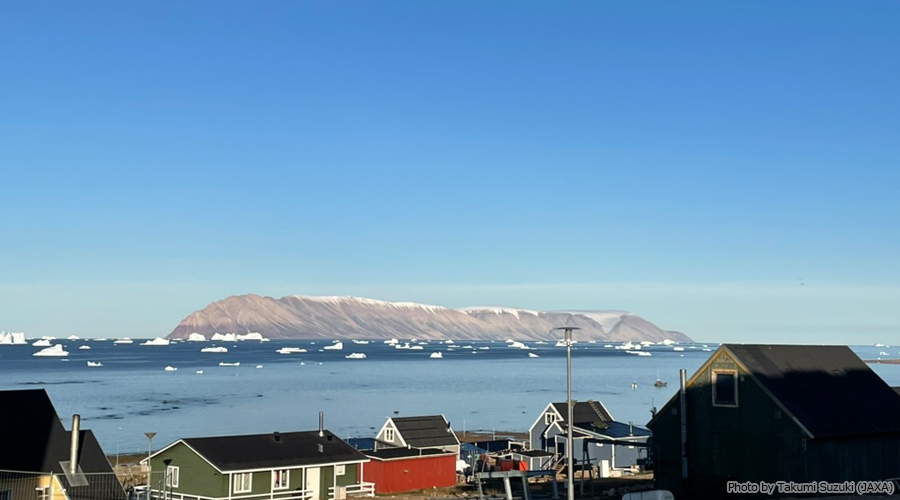
A few days earlier, it had rained heavily in the village of Qaanaaq, but snow had accumulated at higher altitudes around Qaanaaq, and white snow could be observed covering the distant islands (Fig. 1). This year’s observations, which started when the snow began to melt, have come to an end as the snow started to fall.
Looking back, the first half of this year’s observations (from early June to early July) started with two advance team members (Nishimura and Suzuki) arriving in Qaanaaq in early June to set up the base. The advance team started surveying before the snow cover melted, accumulating data from snow cover cross-section observations and setting up AWS at new sites. In mid-July, they were joined by a follow-on team of four (Shimada, Arie, Ono and Kobayashi) in Qaanaaq and were able to smoothly pass the baton to observations during the melting period.
In the second half of the observation period (mid-July to ongoing), the six-man team conducted a wide range of observations, including recharge area observations, ice core drilling, microbiological observations and optical observations. Of these, the recharge area observations in particular involved the risk of crevasse slips and falls, and could not have been achieved without any one of the six rope partners and base keepers. Ice core drilling and microbiological observations also could not be carried out by one person, and the six-person team was put to good use.
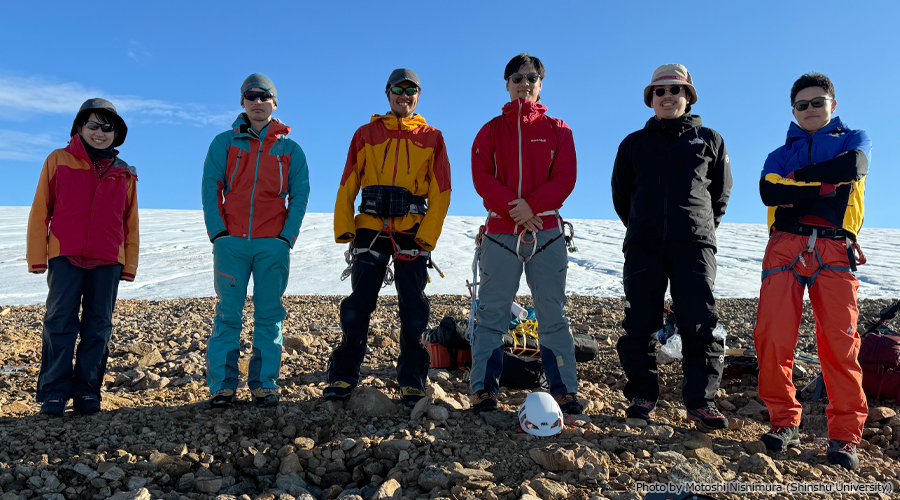
In the small detached base, all of us experienced communal living with six other people, although it lasted only 32 days. In group living, there are restrictions that prevent each person from spending time as they wish. At the same time, we were made acutely aware of the importance of committing to the rules. Just as an ice cap is formed when snow is piled on top of a foundation of land, it is possible to carry out observations when there is a foundation of life, so we learnt the importance of putting life (living) first and working hard at our jobs.
The members who returned home first left the base to the remaining four members (Nishimura, Shimada, Arie and Ono). The remaining members will stay in Qaanaaq for a few more days to organize and remove the observation equipment.
Although the ArCS II project will end this fiscal year, snow and ice observation in Qaanaaq will continue to be an important task, and the author believes that it is highly necessary to start a new project to continue the work. We hope that you will continue to pay attention to this project in the future.
(2024/8/18)
Ice cap observations supported by Qaanaaq villagers
Writer:Kino Kobayashi (Chiba University)
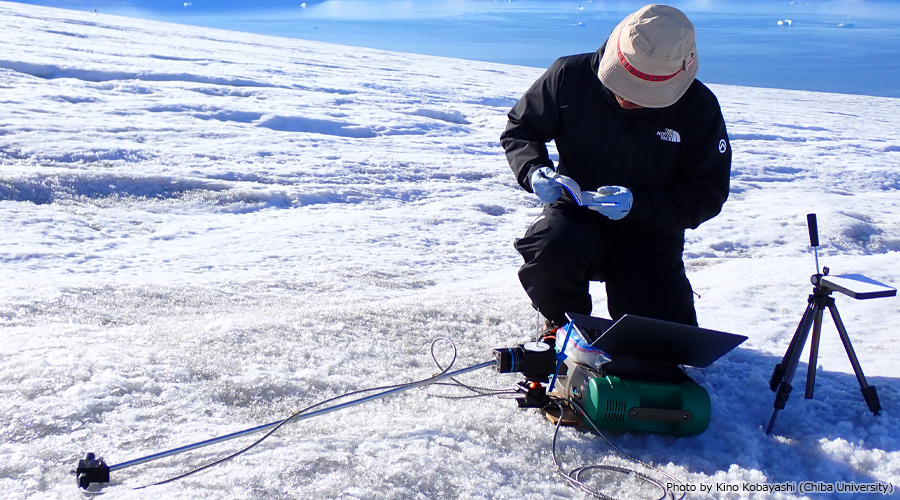
As August began, the melting of the Qaanaaq ice cap progressed, and the area of the dark-colored ice surface expanded. The observation team conducted optical observations of the ice surface (Fig. 1) and drilled ice cores to clarify the internal structure of the ice cap (Fig. 2). Ice cores were drilled four times from late July. The drilled ice cores will be brought back to Japan for further analysis.
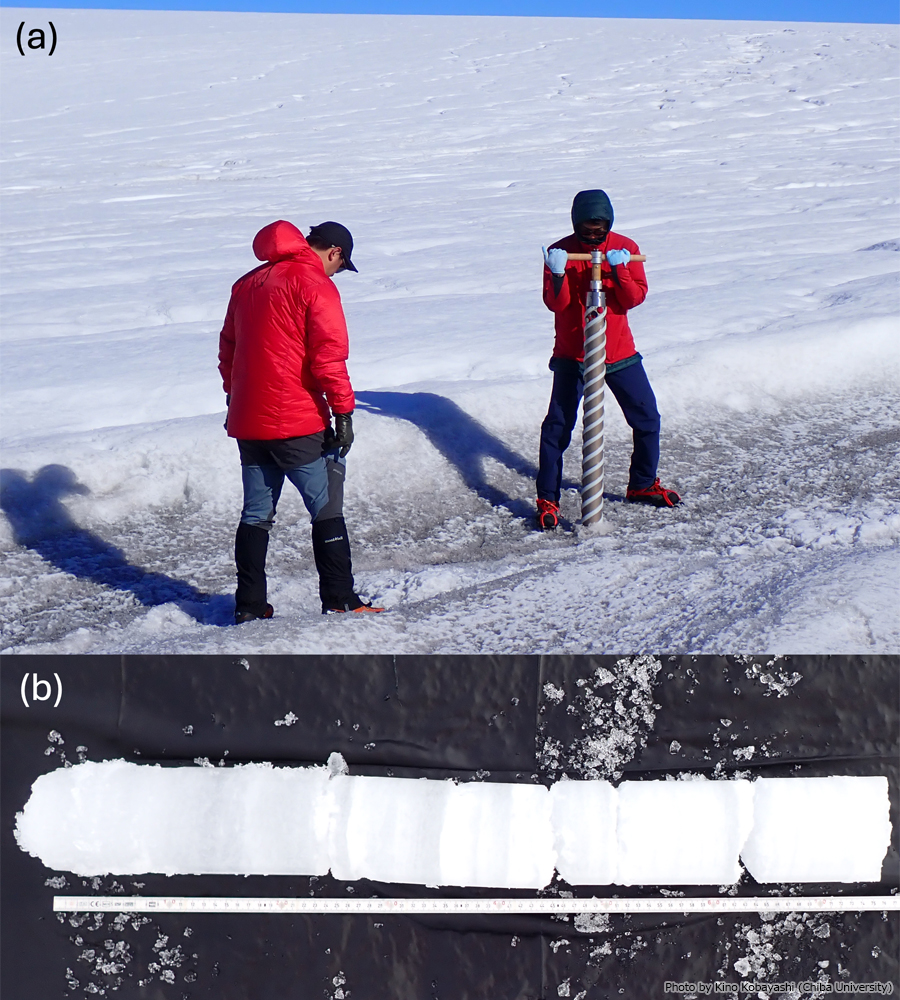
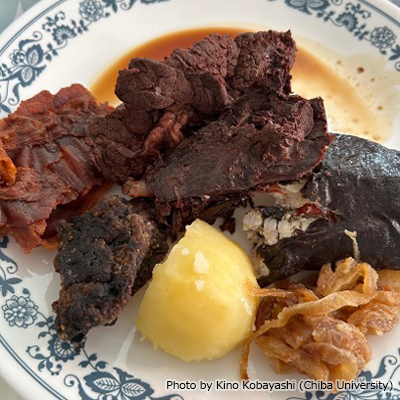
In Qaanaaq village, the team also enjoyed interacting with the villagers. The team members visited the home of a person who has always been kind to us and enjoyed a traditional village meal of matta (whale skin), seals, and appaliarsuk (seabirds) (Fig. 3). Our observations are carried out as we are grateful to the villagers for their warm welcome.
Autumn leaves can be seen along the road. Qaanaaq’s short summer is coming to an end, and autumn is about to arrive.
(2024/8/12)
Successful ascent to Qaanaaq ice cap
Writer:Kenshiro Arie (JAXA)
The group of the ArCS II Research Program on Cryosphere is observing glacier changes using the satellite-mounted L-Band Synthetic Aperture Radar (L-Band SAR), which is able to observe the interior of the ice cap by irradiating and receiving highly penetrating long-wavelength microwaves (wavelength: about 24 cm). Japan Aerospace Exploration Agency (JAXA) is currently operating two L-Band SARs, the “DAICHI-2 (ALOS-2)” and the “DAICHI-4 (ALOS-4)”. ALOS-4 was launched by the H3 locket on July 1, 2024.
The group plans to conduct ground-penetrating radar surveys over the entire Qaanaaq ice cap as verification data for glacier observations (internal structure of the ice cap) using L-Band SAR. However, it is necessary to establish a safe route before the survey because there are hidden crevasses near the top of the ice cap.
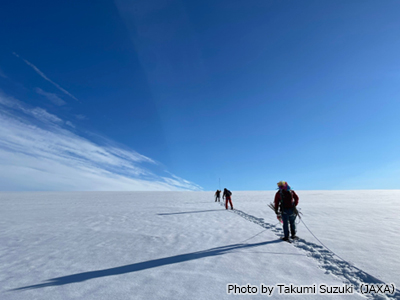
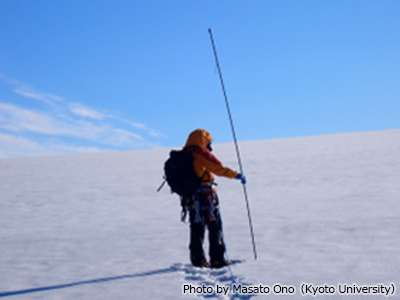
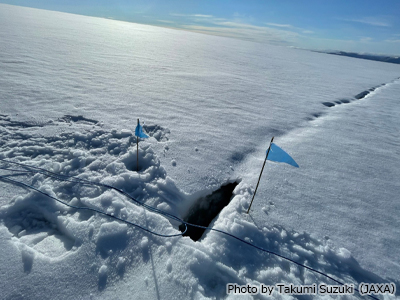
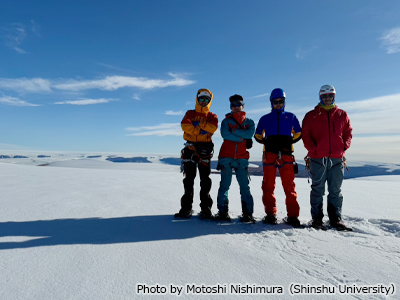
Therefore, on July 27, 2024, we confirmed which route is safe near the top of the ice cap. The team members secured each other’s bodies with ropes and walked in single file to prevent slipping into the crevasse (Fig. 1). The front member of the low used a sonde stick to check for crevasses (Fig. 2), while the following team member marked the established route while ensuring the safety of the first member (Fig. 3). Approximately 6 hours after departure from the base, the team reached the top of the Qaanaaq ice cap (Fig. 4). On the same day, the group also conducted snow sampling (Fig. 5), grain size observation (Fig. 6) on the top of the ice cap, and maintenance of the AWS installed at an altitude of approximately 950 m. The group will continue to be vigilant in its field observations.
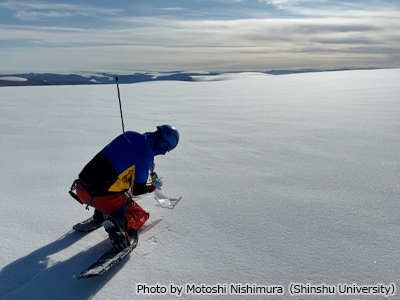
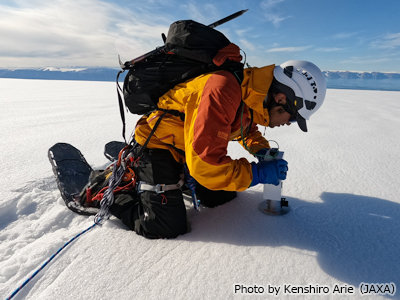
(2024/8/3)
The beginning of microbial activity
Writer:Kino Kobayashi (Chiba University)
On July 23 and 24, 2024, the observation team headed for the Qaanaaq ice cap. On snow and ice surfaces, red snow and dark-colored ice caused by the growth of microorganisms have begun to appear (Fig. 1 and 2). The small red spherical objects in Fig. 1(b) and the dark filamentous objects in Fig. 2(b) are microorganisms called snow/glacier algae.
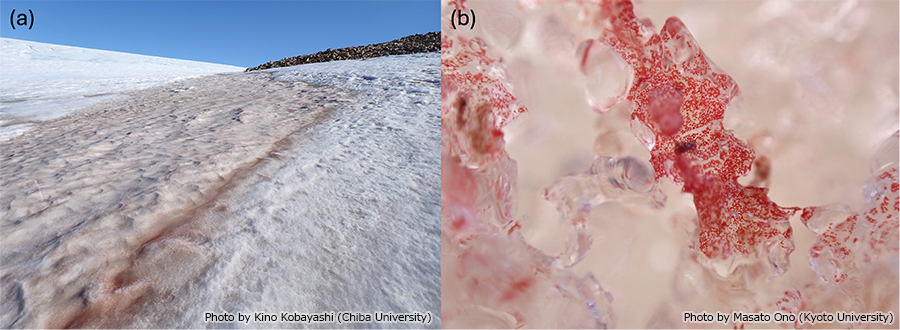
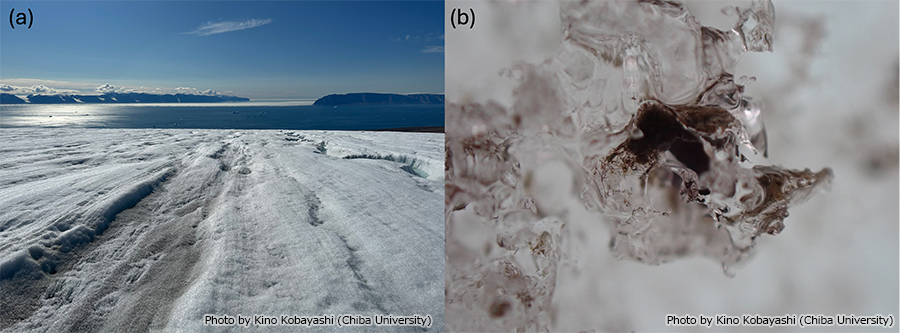
A wide area on the ice cap is still covered with white snow and ice. We will continue to observe the surface condition.
On the long journey back from the ice cap, we returned to our base, gazing at the distant mountains, Qaanaaq village, and the sea of clouds (Fig. 3).
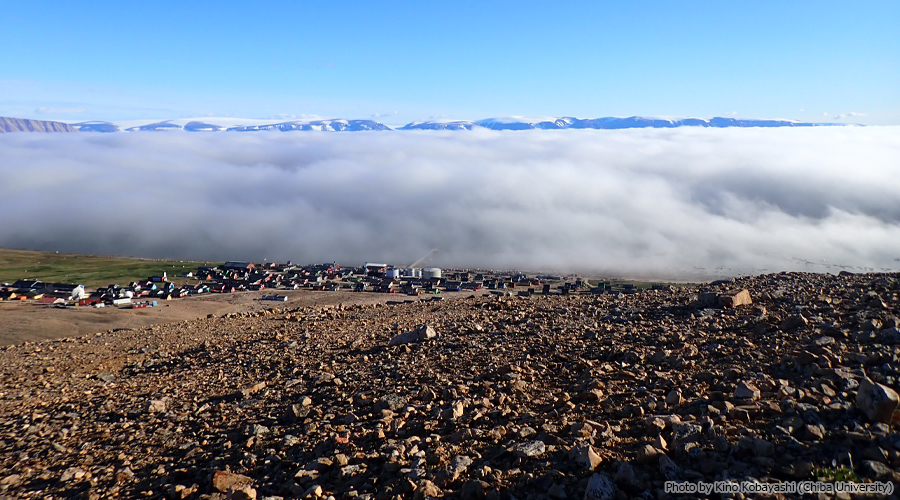
(2024/7/26)
The follow-on team has arrived at the observation base in Qaanaaq village
Writer:Kenshiro Arie(JAXA)
On July 17, 2024, Rigen Shimada, Masato Ono, Kino Kobayashi, and Kenshiro Arie, members of the follow-on team for the Sub Program 1 of the ArCS II Research Program on Cryosphere, arrived at Qaanaaq village.
Upon arrival at the observation base, we met up with Motoshi Nishimura and Takumi Suzuki of the advance team and were happy to see each other again (Fig. 1).
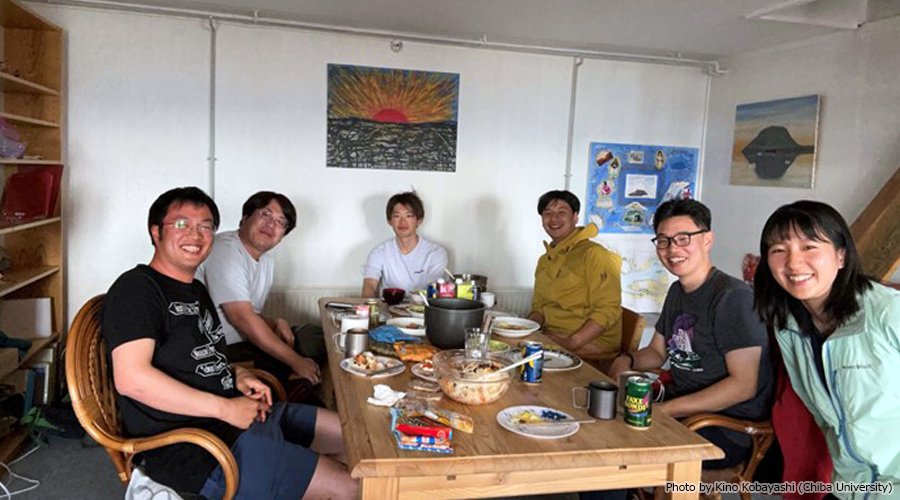
The next day (July 18), the observation team headed for the Qaanaaq ice cap. The advance team conducted snow pit observations and maintenance of the Automated Weather Station (AWS), while the follow-on team conducted preliminary inspections and surveys (Fig. 2 and 3).
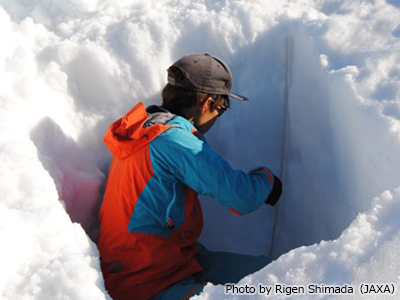
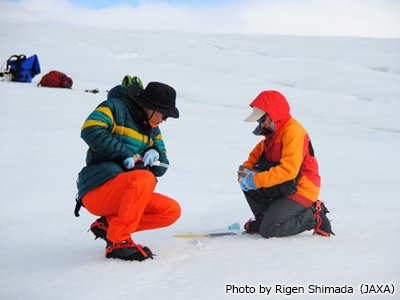
The observation will be a long-term project until the end of August, and we will continue to work as one team.
(2024/7/20)
Surface melting at the SIGMA-B site
Writer:Motoshi Nishimura (Shinshu University)
The ice surface below the snow layer was exposed earlier in this year’s Qaanaaq ice cap because the low snowfall compared to previous years.
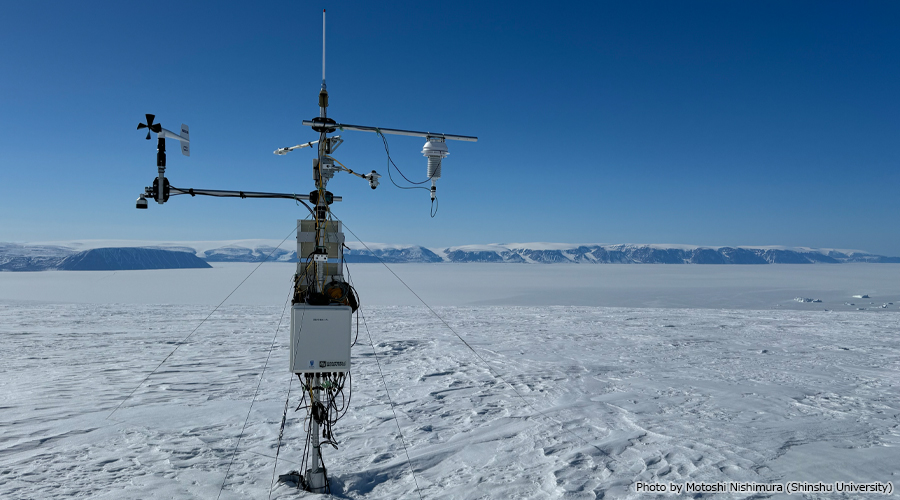
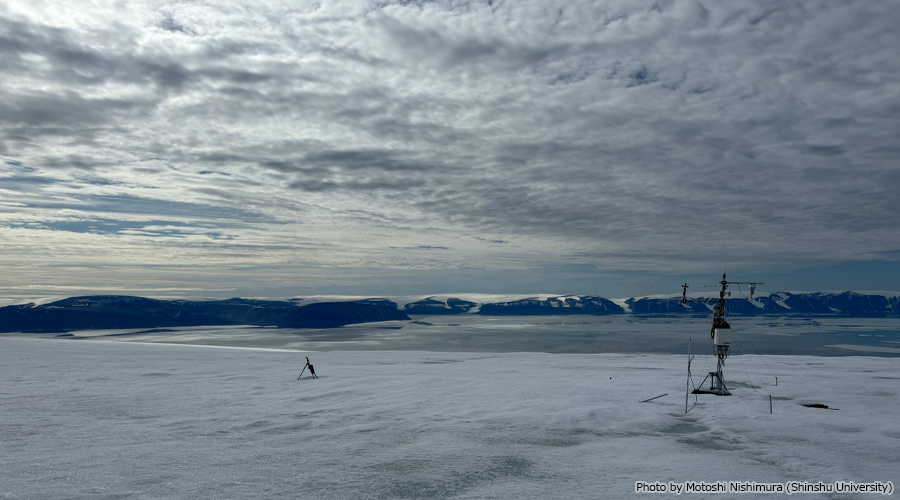
Fig. 1 is a photo taken at the SIGMA-B site on June 9, 2024. Snow cover surface, which was directly under the white logger box at the same time of last two years, is at a lower position this year. Fig. 2 is a photo of the SIGMA-B site taken one month later (July 9). It can be seen from this photo that the surface has decreased further. The snow depth at this time was 5 cm.
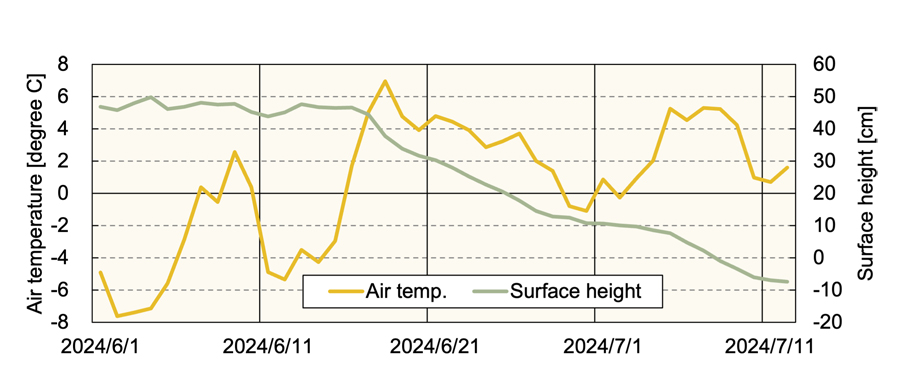
Fig. 3 shows the daily mean air temperature and surface height observed at the SIGMA-B site from June 1 to July 12, 2024; the temperature was below freezing in the first half of June, but it was stable and positive from the second half of June. The observed data also show that the surface height decreased as the temperature increased, with a 36.1 cm decrease in June, for a total of 54.3 cm for the analysis period.
This was the third largest surface decrease in June in the 12 years since observations began in 2012, making it a relatively unusual year. We will continue to monitor the state of the glacier as the survey continues.
(2024/7/16)
There were visible and invisible changes in the ice caps
Writer:Takumi Suzuki (JAXA)
On July 9, 2024, we conducted observations at the SIGMA-B site.
In our reports, we have documented the gradual disappearance of the snow cover on the Qaanaaq ice cap. In the area we have been monitoring, extending from marginal area of the ice cap to SIGMA-B, the snow cover has almost completely vanished. In the marginal area of the ice cap, we observed that the ice, once broken upstream, was transported downstream by the water flow, where it was deposited and spread out in a pattern resembling a palm (Fig. 1).
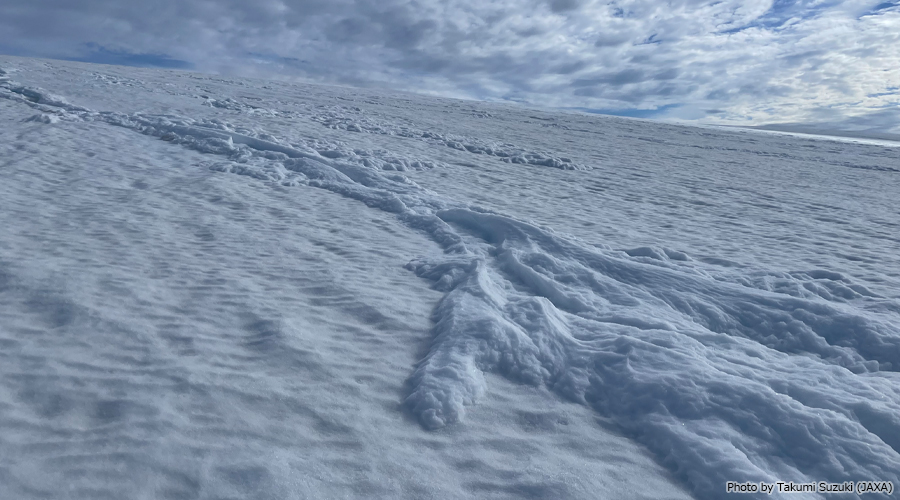
In the marginal area of the ice cap, we frequently encountered columnar ice (weathered ice), as depicted in Fig. 2. This was a significant change in appearance compared to the previously snow-covered conditions.
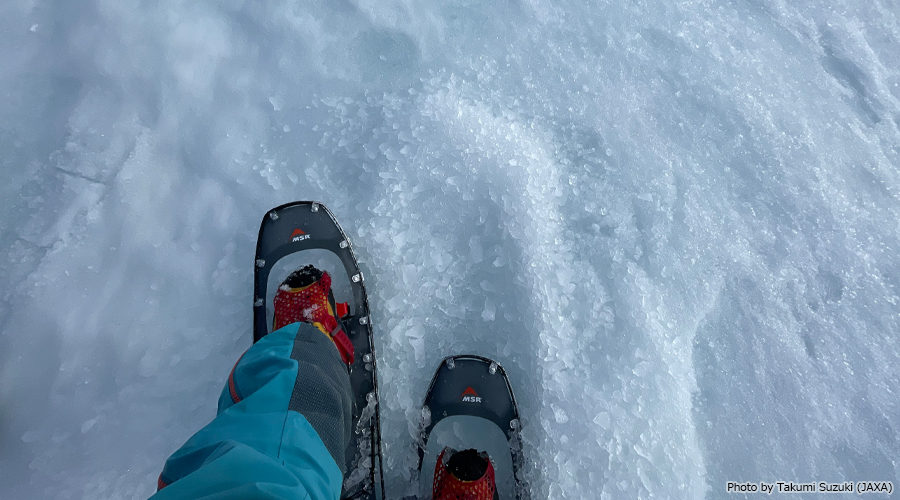
We also observed cryoconite, a composition of mineral particles and micro-organisms, under the ice surface. Some cryoconite holes (Fig. 3) were scattered across the ice cap.
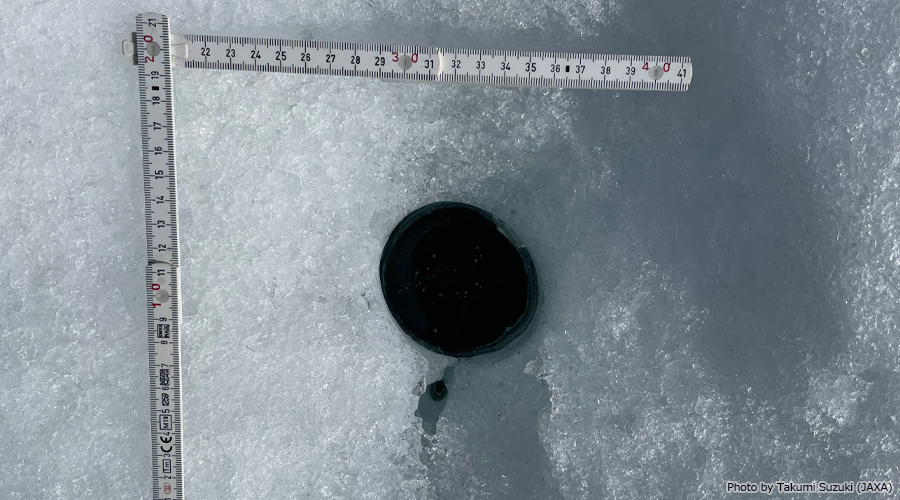
The snow and ice surface temperatures, as observed by the SGLI sensor, were visualized on the JAXA Global Environment Monitor (https://www.eorc.jaxa.jp/JASMES/index_map.html ) (Fig. 4). It was evident that the snow and ice surface temperatures on the Qaanaaq ice cap were higher in early July than they were in early June.
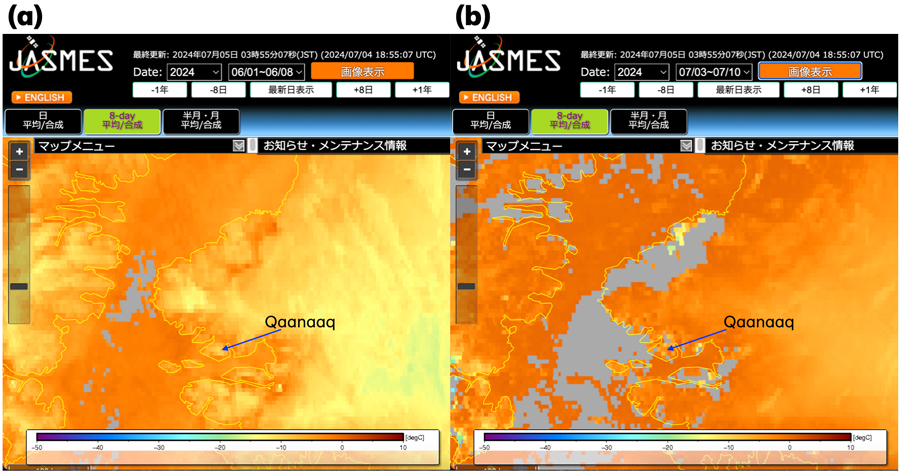
(2024/7/15)
The sea ice has thawed, and the arrival of ships has started bringing in supplies
Writer:Takumi Suzuki (JAXA)
The sea ice around Qaanaaq village is melting.
When we arrived in Qaanaaq on June 5, 2024, the surrounding sea was covered with ice (Fig. 1). On July 5, the wind was blowing strongly, and the following day we could visually see that the sea level extent had increased (Fig. 2).
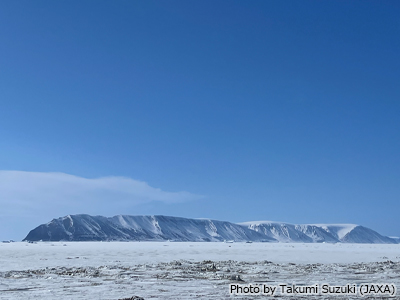
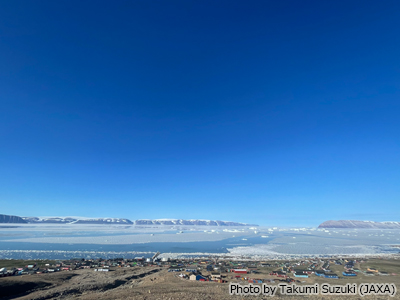
The sea ice concentration around Greenland on the AMSR Global Environment Viewer (https://www.eorc.jaxa.jp/AMSR/viewer/index_e.html ) shows that the concentration has decreased over the past month (Fig. 3 and 4). In addition to sea ice concentration, the AMSR Global Environment Viewer allows the visualisation of various physical quantities related to water in the ocean, land and atmosphere, as observed by the AMSR sensor on board the GCOM-W satellite.
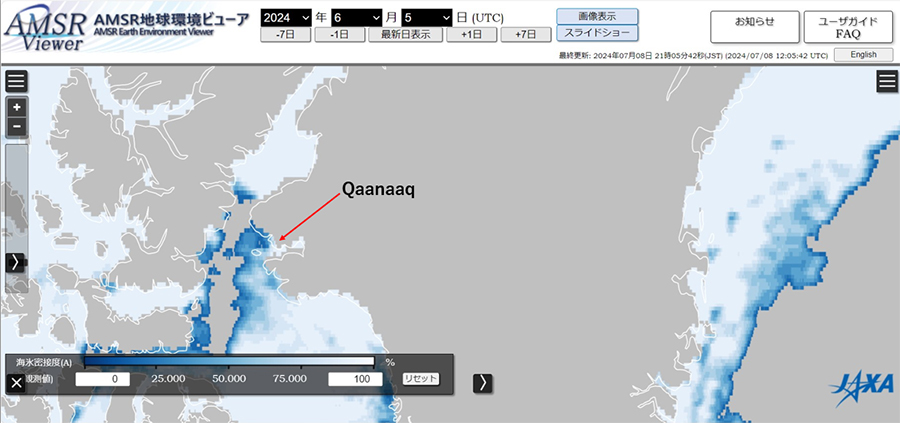
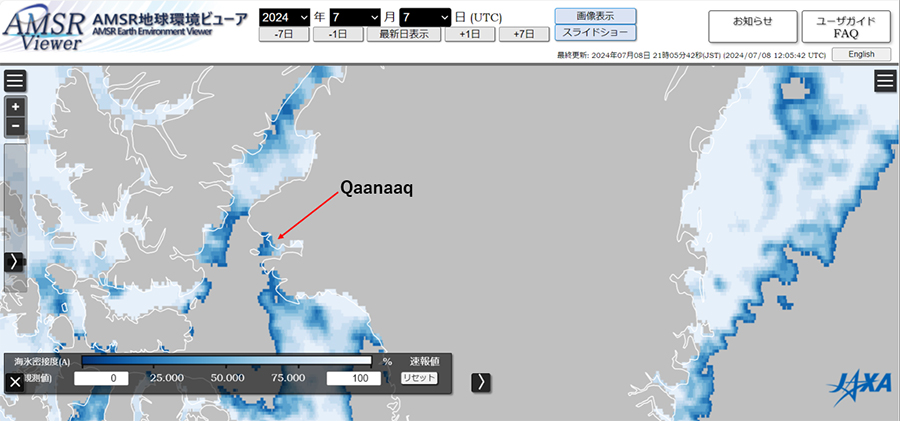
The sea ice has also opened up, and on July 7 the Royal Arctic Line (transport ship) arrived in Qaanaaq and started to transport supplies (Fig. 5). Foodstuffs and other supplies, which had almost been depleted, were brought to the supermarkets, enriching the lives of the villagers. We, too, are looking forward to seeing the new food products on shop shelves.
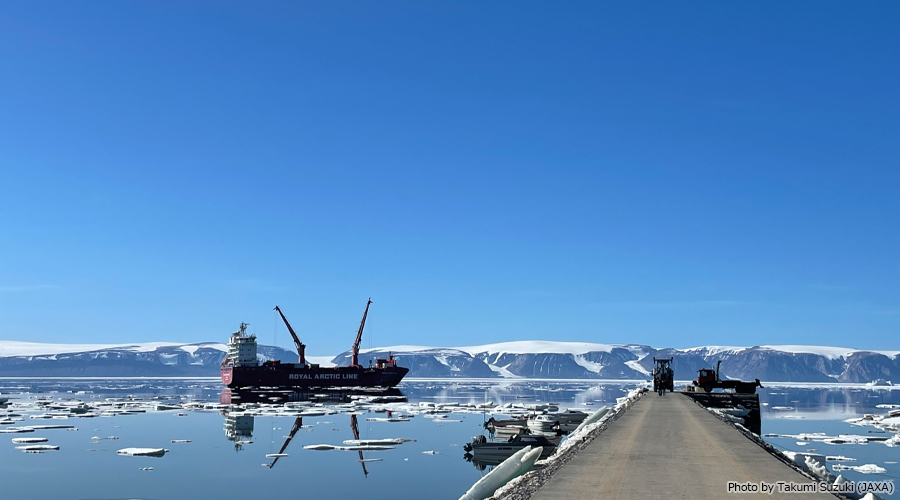
Today, July 8, the weather is fine. When we meet villagers, even complete strangers say “Good morning.” to each other. So far, this may be a common conversation in Japan, but exchanging the words “It is a beautiful day.” may not be common in Japanese cities. In Qaanaaq, the day starts pleasantly.
(2024/7/8)
Summer is approaching in north-west Greenland
Writer:Takumi Suzuki (JAXA)
On June 24, 2024, we visited the upper area of the Qaanaaq Glacier to observe changes since our previous visit. We noted the formation of water flows on the glacier’s surface (Fig. 1). The air was clear and the sky was blue, providing ideal conditions for observation. We successfully installed a new Automated Weather Stations (AWS) upstream of the Qaanaaq Glacier, which we hope will provide accurate weather data.
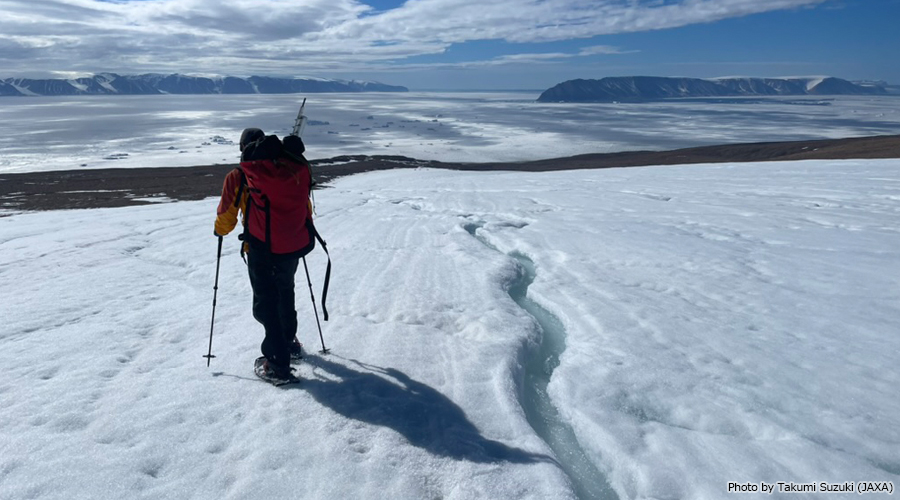
On June 30, we traveled to the SIGMA-B site, located at the upper area of the ice cap, for further observations. It had snowed the day before, leaving about 1 cm of fresh snow on the surface, but dark dirt material was visible beneath the snow (Fig. 2 and 3).
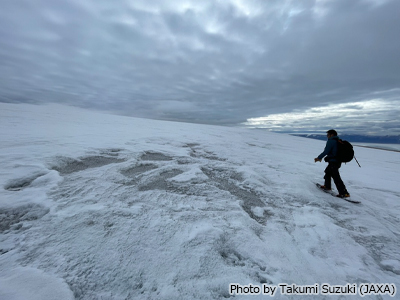
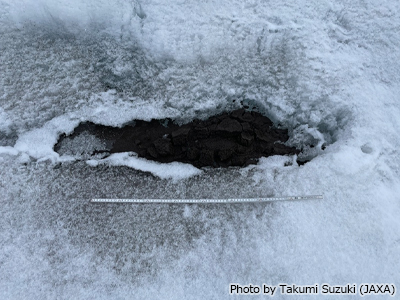
At the SIGMA-B site, we conducted snow pit observations. The snow cover was 17 cm deep to the ice, indicating that more than 30 cm of melting had occurred since our previous visit (Fig. 4).
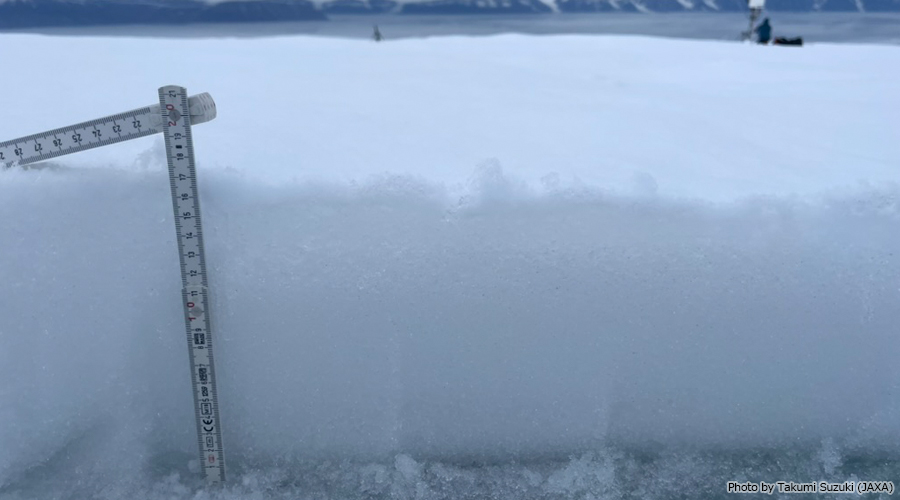
In Qaanaaq village, a beautiful flower known as the Arctic Poppy was in bloom (Fig. 5). Despite ongoing snowfall events on the ice cap, summer is steadily approaching.
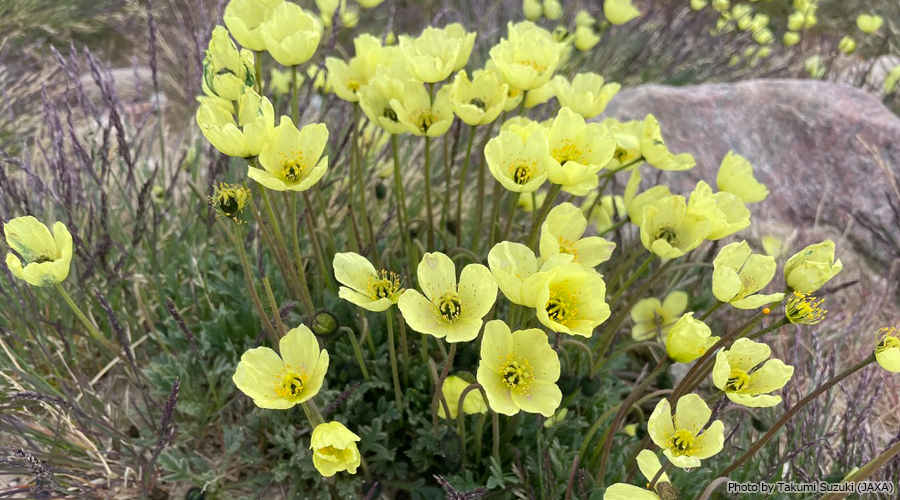
(2024/7/1)
While the snow depth in the ice caps is decreasing, the morale of the village is rising
Writer:Takumi Suzuki (JAXA)
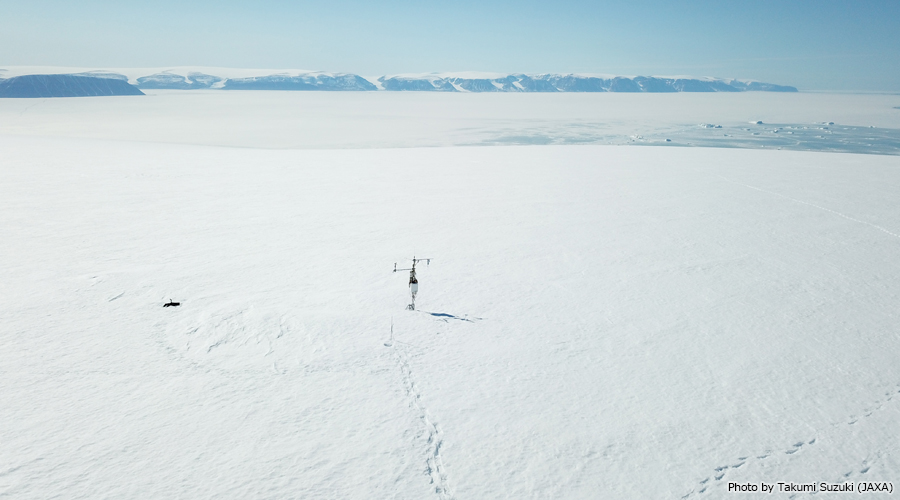
On June 19, 2024, we visited the SIGMA-B site (Fig. 1). We measured the snow depth and found it to be about 54 cm (Fig. 2). Upon arriving in Qaanaaq, our first visit to the SIGMA-B site was on June 9, where the snow depth was about 70 cm-deep enough to conceal a squat person (Fig. 3). Despite 5 cm of snowfall since June 9, the snow had significantly melted in just 10 days. Our arrival in Qaanaaq was likely just before the snowmelt accelerated, allowing us to begin observations at a critical time.
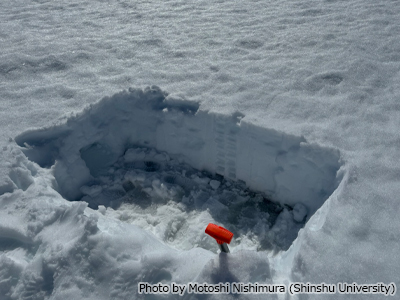
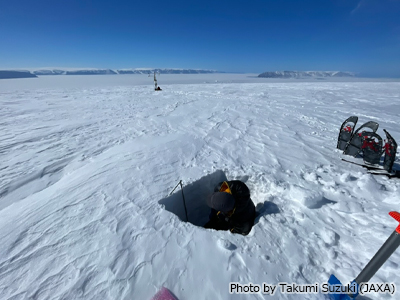
June 21 was “National Day” in Greenland, and a festival celebrating midsummer was held in the gymnasium of Qaanaaq Village (Fig. 4). At the festival, stewed matta (whale skin) (Fig. 5), bread, coffee, and other drinks were served free of charge. In the evening, a live band of villagers entertained the crowd. It was evident that people of all ages and genders were celebrating and enjoying the day.
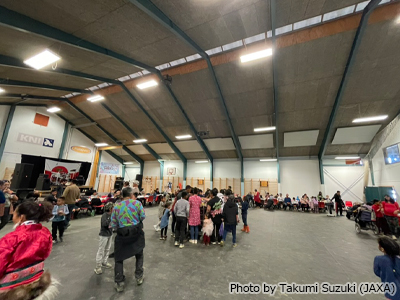
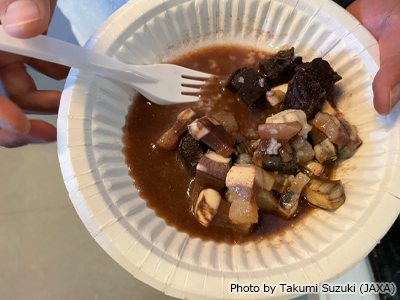
(2024/6/24)
In Qaanaaq, ice over the sea and snow on the glaciers
Writer:Takumi Suzuki (JAXA)
On June 13, 2024, we visited the SIGMA-B site for observations. We reviewed the data retrieved from the camera installed on June 9 and found it captured a clear image of the sky over SIGMA-B (Fig. 1). Additionally, we examined the snow cross-section and identified a fresh 5 cm layer resulting from snowfall on June 11-12.
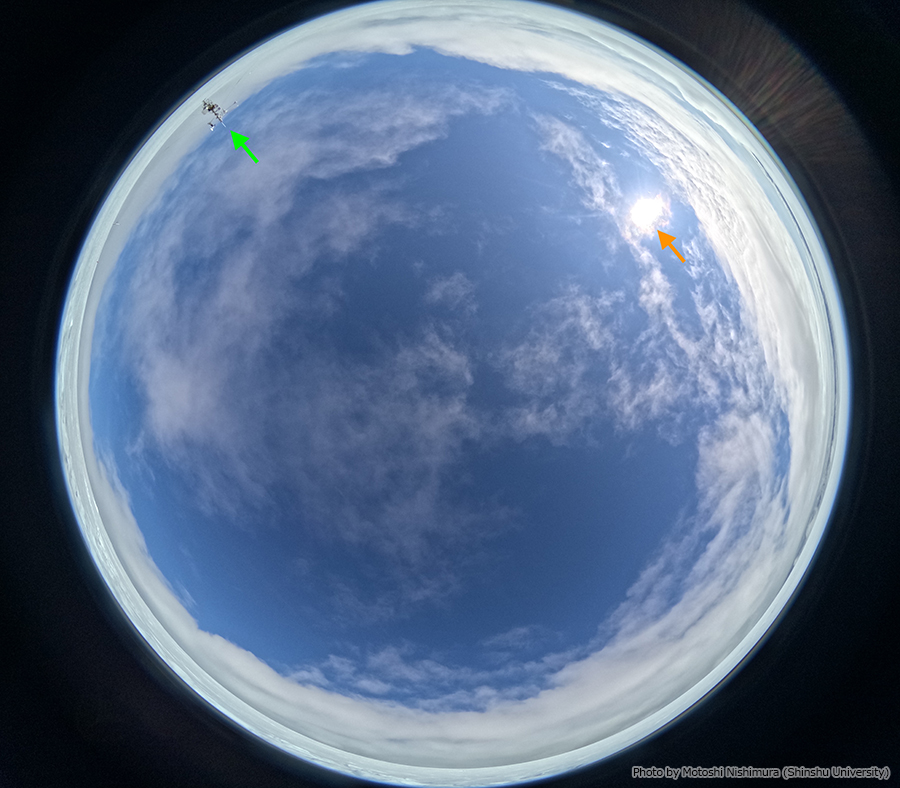
Subsequently, on June 15, we conducted observations at the glacier-connected site. Using a drone, we successfully captured images of the sea and the glacier towards Qaanaaq Village (Fig. 2). Notably, the sea surface remains frozen, while the glacier is snow-covered.
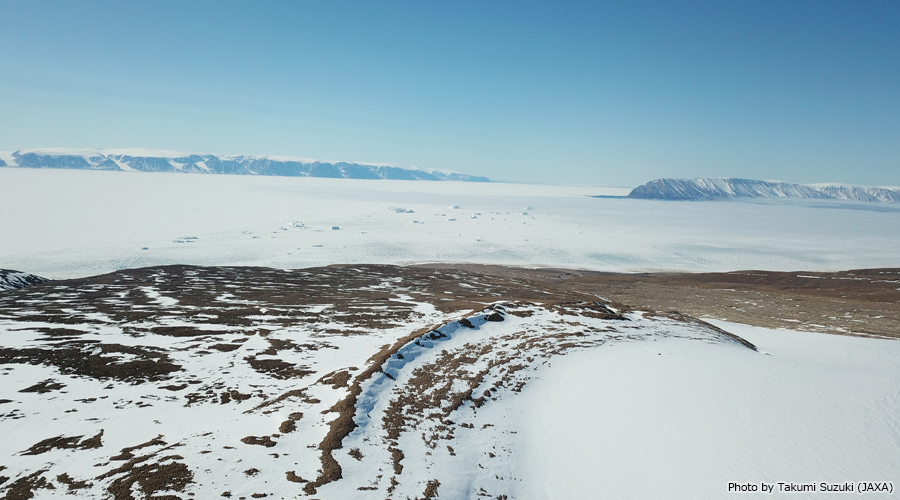
The only two traces were carved on the fresh snow on our way to the ice cap (Fig. 3).
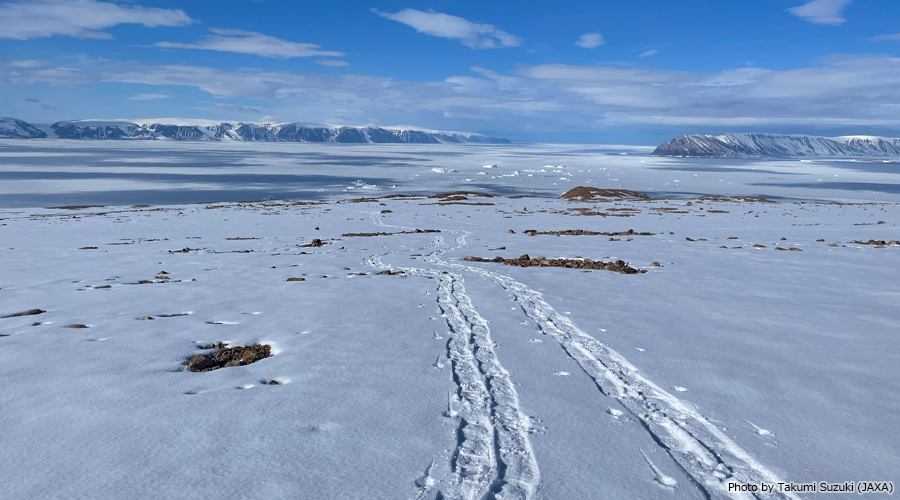
Moving forward, we will closely monitor the melting processes affecting the snow and ice.
(2024/6/16)
Field Observation in Qaanaaq ice cap / glacier is beginning
Writer:Takumi Suzuki (JAXA)
On June 5, 2024, Motoshi Nishimura and Takumi Suzuki, members of the advance team for the Sub Program 1 of the ArCS II Research Program on Cryosphere, arrived at the observation base in Qaanaaq Village.
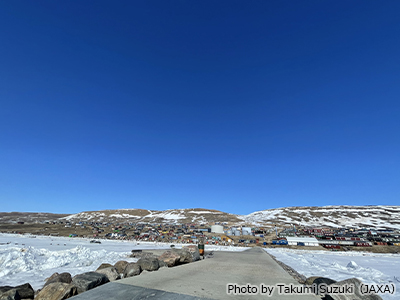
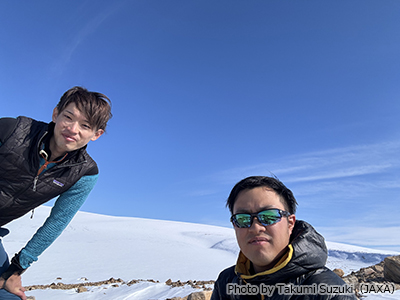
Two days later, we conducted a reconnaissance mission to the base of Qaanaaq Glacier to assess its condition. Our observation revealed that the glacier was covered with snow.
On June 9, we proceeded to the SIGMA-B site upstream of the glacier to carry out maintenance on the Automated Weather Station (AWS) under our care. We retrieved data from the AWS and conducted snow pit observations, noting a snow cover of approximately 70 cm deep until the ice became visible.
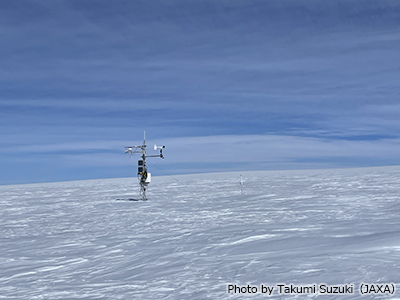
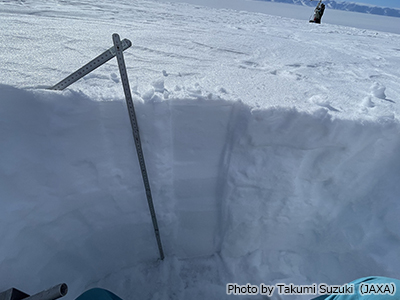
On June 10, we revisited the glacier area to conduct aerial snow cover assessments using a drone and to collect snow samples.
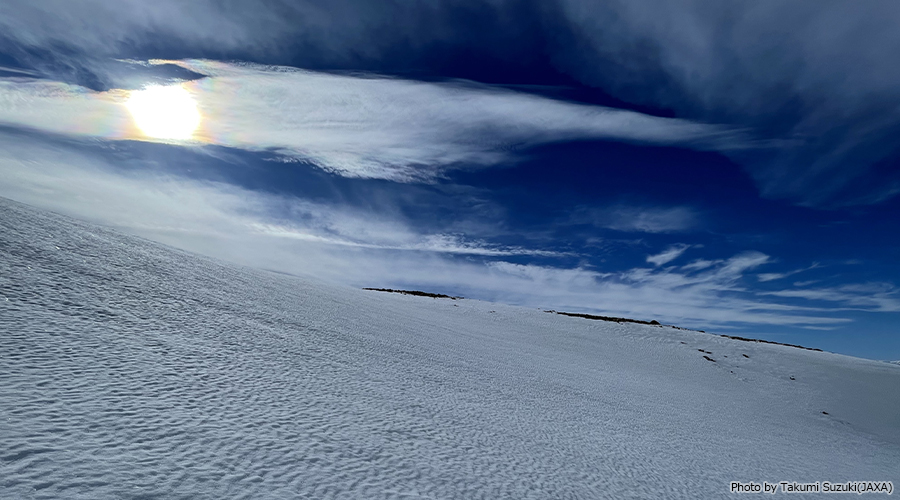
These observations will persist until the conclusion of August.
(2024/6/12)
